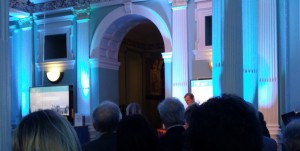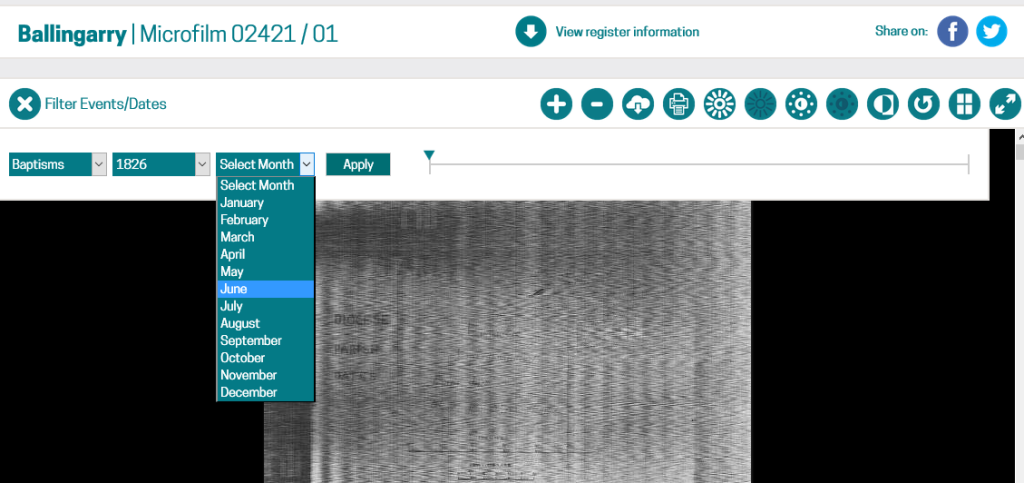An historic resource has been made available to the genealogical community in Ireland and around the world with the publication of Ireland’s historic Roman Catholic parish registers, online. The collection covers all counties on the island of Ireland and can be found on National Library of Ireland Website.
Origins of the Collection

Enda Kenny launching the NLI’s Catholic Parish Registers website
In the past a family history researcher who wanted to search an original Catholic parish register for the baptisms and marriages of their ancestor had to visit the National Library and scroll through what were fast becoming degraded microfilm on old microfilm readers. Now this work can be done from the comfort of your own home on an extremely easy to navigate site. The registers have not been indexed or transcribed, these are images of each page in the parish register as it was microfilmed between the 1950s and 1970s. You will still have to manually search the registers for evidence of your ancestor.
Complementing Other Sources for Irish Baptisms and Marriages
However, the collection of Catholic parish registers online can be used in tandem with other indexed collections, such as the parish register database found on www.rootsireland.ie The collection on www.rootsireland.ie are transcripts only and do not provide the researcher with an image of the original page. This means that you cannot verify whether the transcription is correct or complete. On many occasions I have found a record on www.rootsireland.ie that was only partly transcribed or in which a name had been transcribed in error. It is always of value to be able to view the original record, to verify the information as it was recorded at the time of the event. There are plenty of parish register entries missing from the rootsireland database, now is your chance to check and double check the original registers for the records that might have been previously missed. Don’t forget that the parish priest may also have made notes in the margin of the register, recording the later marriage and spouse beside the baptism of a child of his parish, or the name of an absconding father on the baptism of the child of an unmarried mother. You don’t know what surprises the records might hold until you see them for yourself. Beside the baptismal record for Thomas McDonagh in the parish of Cloughjordan on 2nd February 1878 the parish priest wrote ‘EXECUTED 1916’. These are the features from the original that bring the records to life.
How to Use the Website

This release has made dozing over a microfilm reader (and accidentally hitting the fast forward button), a thing of the past, at least as far as Roman Catholic parish registers are concerned. We are likely to see these registers, which are free to view on the National Library website, being indexed by the commercial genealogy companies, further enhancing our ability to locate and truly document our Irish ancestors.
Well done to the National Library of Ireland for this historic release.
